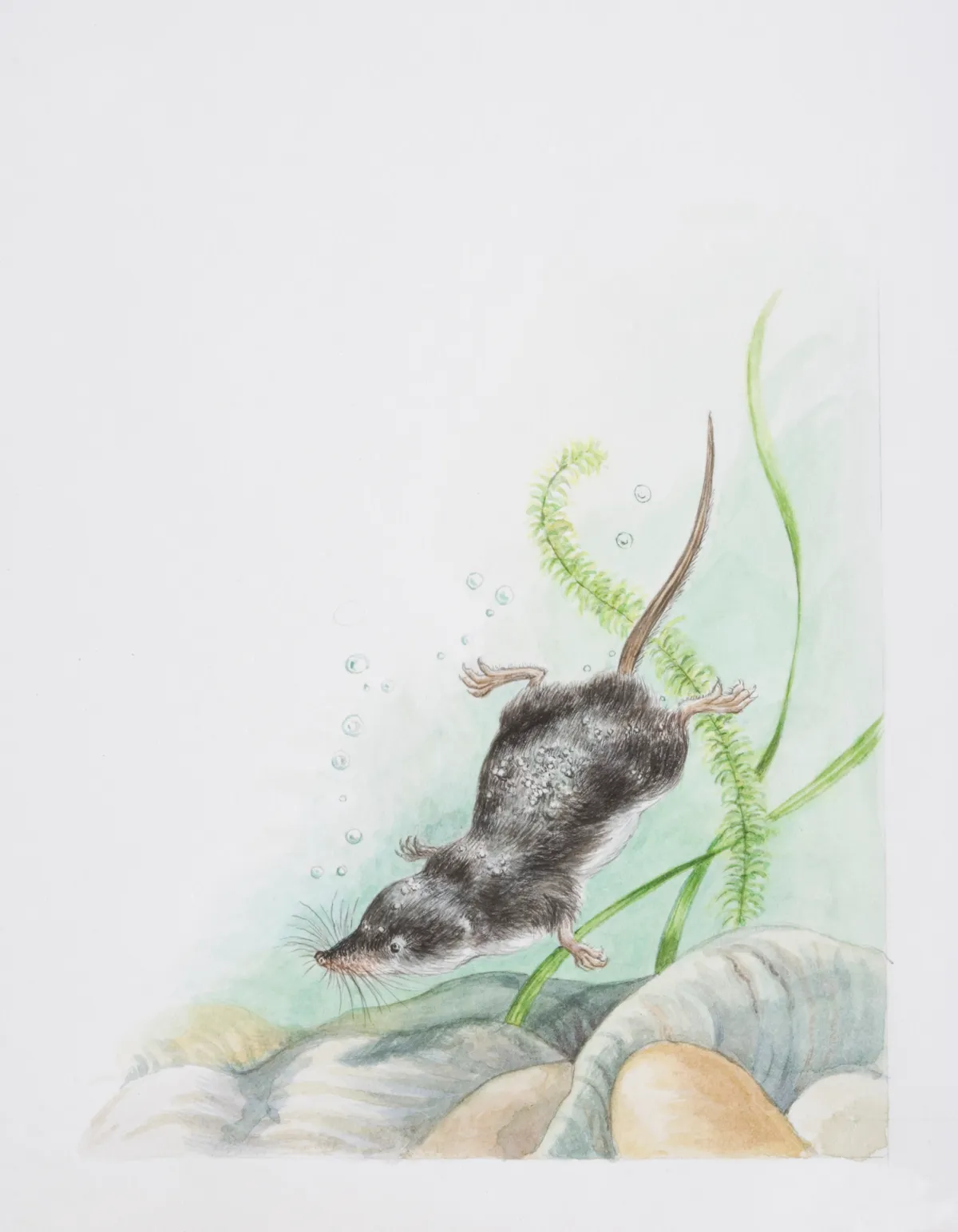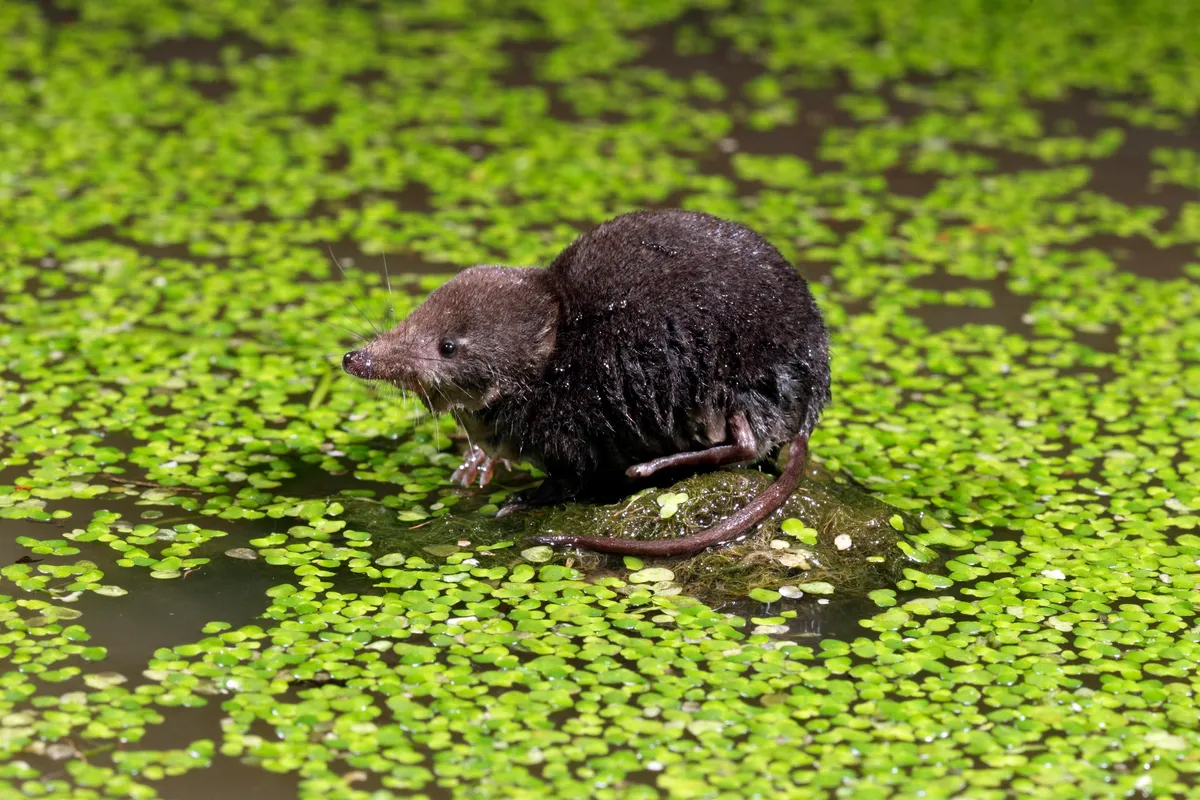What is the scientific name of the water shrew?
The scientific name of the Eurasian water shrew, normally just referred to as the water shrew in the UK, is Neomys fodiens. It is the only member of the Neomys genus found in the UK and British Isles, the other shrew species belong to different genera:
- Common shrew (Sorex araneus)
- Pygmy shrew (S. minutus)
- Lesser white-toothed shrew, also known as the Scilly shrew (Crocidura suaveolens)
- Greater white-toothed shrew (C. russula)
The other members of the Neomys genus are the southern water shrew (N. anomalus) and the Transcaucasian water shrew (N. teres).
It is a member of the sub-family Soricinae, the red-toothed shrews, characterized by the colour of their teeth, which is produced by iron compounds that toughen the enamel.
Why are water shrews venomous?
Water shrews’ saliva contains a venom that subdues their invertebrate prey. Their bite is not powerful enough to fully penetrate human skin, but they can still cause a painful rash.

How are water shrews adapted to water?
A water shrew’s thick, water-repellent fur provides protection against the cold and wet. They are also able to shed excess water by squeezing through their tight burrows.
Stiff hairs fringe the water shrew's feet and form a keel on the underside of its tail. Both are thought to help propel the animal in the water.

Are water shrews sociable?
Water shrews are unsociable, solitary animals that avoid contact with each other except when the males leave their territories in search of females.
Where do water shrews live?
Water shrews inhabit all sorts of freshwater habitats, but are particular numerous in water cress beds. They are even occasionally found on sea shores and saltmarshes.

How much does a water shrew weigh?
Weighing up to 18g, the water shrew is Britain's largest shrew. It is three times more than the smallest, the pygmy shrew, and about the same size as a small wood mouse.
Main image: Eurasian water shrew. © Creative Nature NL/Getty
